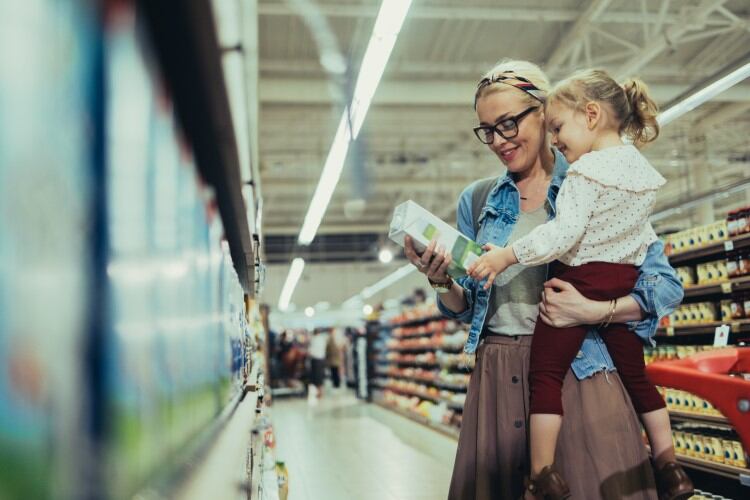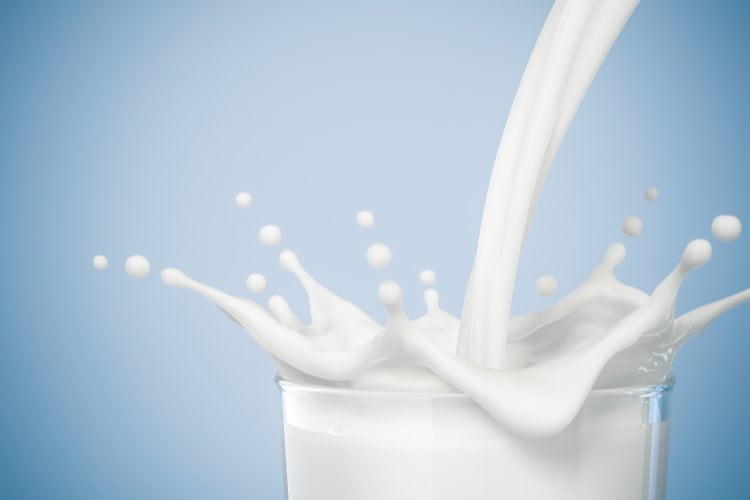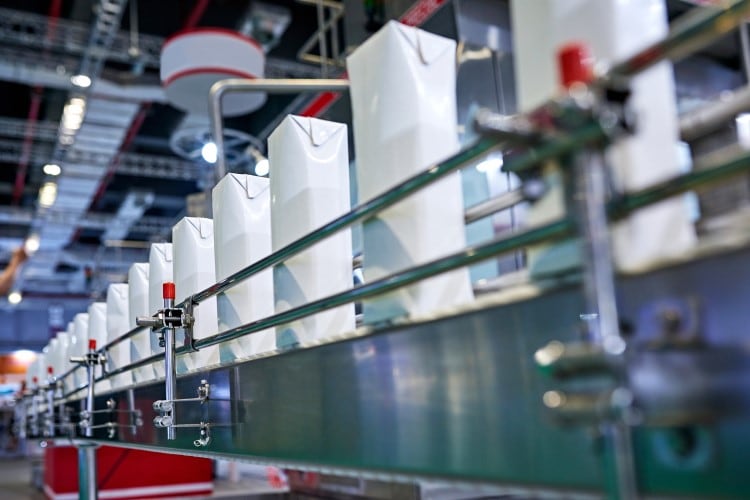Swedish packaging major Tetra Pak recently launched an aseptic beverage carton featuring a paper-based barrier following successful commercial consumer testing in 2022. The new aseptic carton, which is made of around 90% renewable materials (80% is paperboard) and has a 33% lower carbon footprint, has been certified as Carbon Neutral by the Carbon Trust.
Importantly, the new technology almost entirely eliminates the presence of aluminum, which is a significant contributor to greenhouse gas (GHG) emissions from Tetra Pak packaging solutions.
“The purpose of the aluminum foil layer in aseptic beverage cartons is to protect the content from oxygen and light, keeping foods safe for months without the need of energy-intensive refrigeration,” Marco Marchetti, vice-president packaging materials, sales and distribution solutions at Tetra Pak, told DairyReporter. “Although thinner than a human hair, aluminum contributes a third of the GHG emissions linked to base materials used by Tetra Pak. Finding an alternative material that reduces our climate impact while still preserving food has long been a development priority.”
The new aseptic carton, named Tetra Brik Aseptic 200 Slim Leaf, was launched in collaboration with Portuguese food company Lactogal, which tested the packaging with its Mimosa-branded range of chocolate milk drinks. Tetra Pak told us that the carbon footprint of the carton currently on shelf in Portugal had moved from 15g CO2e to 10g CO2e thanks to the paper-based barrier and the use of plant-based polymers derived from sugar cane.
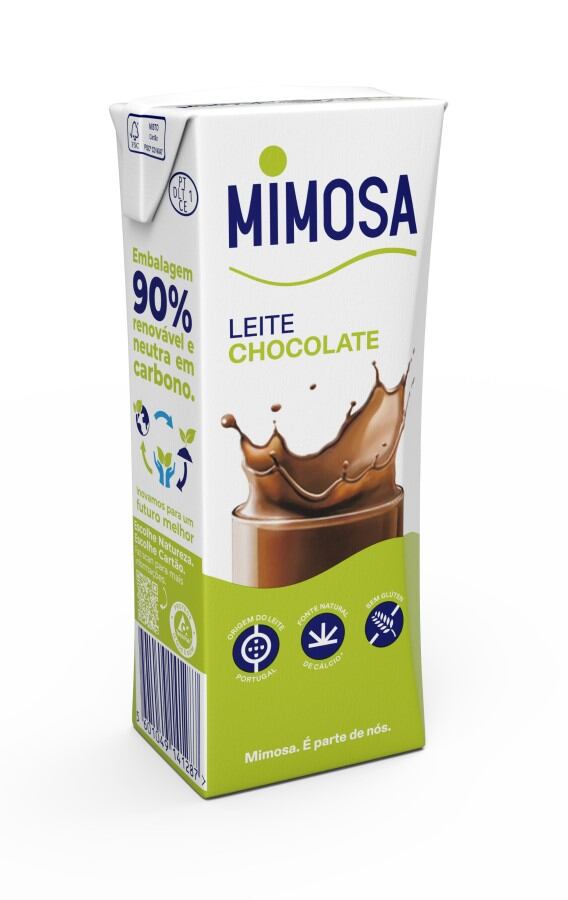
On how the new aseptic carton fared in real-world conditions, Marchetti said: “Our trials have shown that the paper-based barrier has proved suitable for liquid dairy products distributed under ambient conditions, as it protects from light and as well includes a medium oxygen protection. With this product category, the paper-based barrier offers a 6-9 month shelf life, depending on specific formulation.”
But replacing the aluminum foil layer with a paper-based barrier has had an impact on the opening systems and the technology used to seal the carton, we were told.
“The paper-based barrier combines paper with an ultra-thin metallization, which means a very thin aluminum coating is deposited on a main paper substrate,” Marchetti said.
“If compared to aseptic cartons in our current portfolio, you get the same external visual appearance and allow the package to be properly sealed, but the aluminum content in the carton is reduced to 0.05%. Saying this differently, the amount of aluminium is reduced by over 99%.
“In terms of sealing, induction heating is used as the sealing technology in the vast majority of our filling machines, a physical process that, through electro-magnetism, induces warming in the ‘medium’ material (i.e. aluminum). The aluminum then heats up and warms the plastic layers, causing them to melt and seal the carton.”
The fact that aluminum is still present in the packaging has implications for recycling and disposal. For example, the new packaging cannot be home-composted at all and can only be recycled at the same specialist facilities that process aseptic cartons today. There, the different layers of the packaging are first separated before the paperboard can be recycled at paper mills. But Tetra Pak insists more fiber can be collected by recyclers thanks to the higher renewable content in the packaging.
“According to recyclability tests we have run internally and externally, the new packaging material featuring a paper-based barrier is as compliant as ‘standard’ Tetra Brik Aseptic cartons with current recycling streams,” Marchetti confirmed.
“In other words, our aseptic beverage cartons with a paper-based barrier will be collected, sorted and recycled in the same way aseptic beverage cartons are currently handled.
“Recovery of more fibres as well as additional benefits for recyclers – like the ones linked to a simplified material structure – are the areas we are accelerating focus on.”
Tetra Pak recycling rates average 50% in Europe and around 25% globally, with the need for specialist processing infrastructure one of the barriers to recycling.
In its 2022 sustainability report, Tetra Pak said it was collaborating with around 200 recycling facilities and that 1.2m tons of carton packages had been collected and sent for recycling as of January 1, 2023. However, the company sold 193 billion packages in 2022 alone in more than 160 countries globally.
Tetra Pak says it is investing up to €40m/$43m per year in the next years to drive the collection and recycling of carton packages, and spent €100m in 2022 to research and develop packaging that benefits from a simplified material structure. Tetra Brik Aseptic 200 Slim Leaf is one of the solutions the company now has as part of its alternative barriers’ development portfolio.
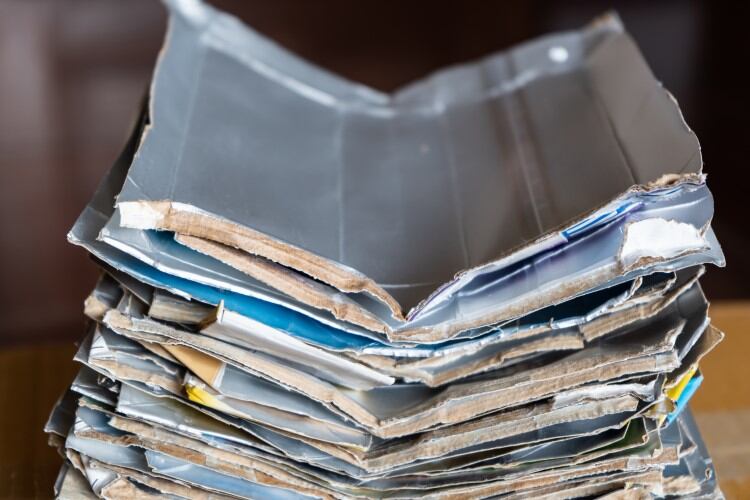
Asked how the new aseptic carton could contribute to reducing the company’s own GHG emissions footprint, Marchetti said: “Tetra Pak is investing €100m per year and will continue to do so over the next 5 to 10 years to further enhance the environmental profile of food cartons. Simplifying material structures, increasing the paper content, and shifting away from virgin, fossil-based plastics is key here.
“We believe this paper-based barrier is a disruptive solution that’s set to revolutionise beverage carton packaging, and is supporting our net zero journey. By 2030, we aim to achieve net-zero greenhouse gas emissions in our operations (scopes 1 and 2 and business travel) and -46% greenhouse gas reductions across our value chain in line with our 1.5°C Science Based Target Initiative (SBTi) commitment, compared to our 2019 baseline.
“By 2050, we aim to work together with our suppliers, customers and other stakeholders to achieve net-zero GHG emissions across our value chain (scopes 1, 2 and 3) compared to our 2019 baseline. Our ongoing work with suppliers to cut upstream carbon emissions also includes increasing the use of renewable materials, which are critical to make a low carbon circular economy possible.” The company has reduced its operational footprint [scope 1 and 2] by 80% since 2010, Marchetti added.
The newly-launched packaging won’t enter industrial production until 2025, however. “The process of testing a carton before full industrial production is extensive. The main purpose of running an external technology validation (ETV) is to monitor the solution performance in a real environment,” Marchetti told us. “This looks at customer operations, distribution and logistics, food protection, convenience for consumers and recycling.
“Until the field test phase concluded, we have to stick to one single line. After that we can open up to a limited deployment phase, where some lines can be selected, and the innovation scaled up elsewhere.”
This particular packaging is not suitable for plant-based milks, were told, though the company plans to extend the product categories coverage offered by its paper-based barrier. “When and how this happens will be guided by local needs,” Marchetti said.
One thing is clear, though – demand from the food and beverage industry for more sustainable packaging solutions is likely to remain a key driver for innovation.
According to Tetra Pak’s 2023 research on Planetary challenges and their impact of food and beverage manufacturers’ operations, greenhouse gas emissions, food waste and plastic littering are the top three environmental sustainability concerns facing food and beverage businesses today.
“In light of these concerns, the F&B industry is setting ambitious packaging sustainable goals for the future: in this context, comparative studies often show that paper-based carton packages have a lower carbon footprint than alternative options – such as glass, plastic or metal packages,” Marchetti explained.
Consumer research also supports this. Tetra Pak’s latest environmental survey – which ran in summer 2023 and comprised a total of 14,500 consumer interviews in 29 markets (see details in footnote) - cartons are considered the most environmentally-sound beverage package, overtaking glass for the first time, while plastic was considered the least environmentally-friendly.
“Packaging solutions - like the one introduced with Lactogal - that expand the amount of paper and lower the carbon footprint while ensuring food safety and food access, can help the industry overcome these challenges while addressing consumer expectations,” Tetra Pak’s Marco Marchetti concluded.
Sources:
Sustainable Packaging Consumer Research 2023, Tetra Pak’s latest environmental survey, run in summer 2023 and comprising a total of 14,500 consumer interviews based on an online questionnaire in 29 markets: Germany, France, UK, Italy, Belgium, Denmark, Netherlands, Poland, Portugal, Romania, Spain, Sweden, Saudi Arabia, Turkey, South Africa, Egypt, China, India, Japan, Australia, Indonesia, Philippines, South Korea, Vietnam, Brazil, USA, Mexico, Colombia, Argentina.

